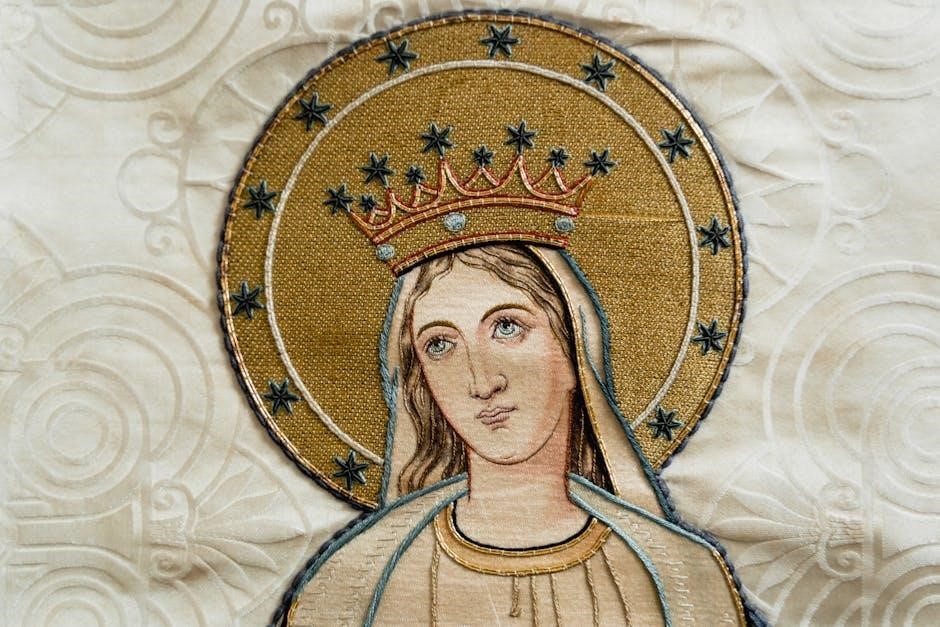Margaret Simon, a young girl navigating adolescence, seeks guidance from God. This timeless novel explores themes of identity, faith, and self-acceptance, resonating with readers globally.
Background Information About the Book
Are You There God? It’s Me, Margaret is a beloved coming-of-age novel by Judy Blume, first published in 1970. It follows Margaret Simon, a sixth-grade girl navigating adolescence, religion, and friendships. The book addresses themes like puberty, identity, and faith with honesty and humor, making it a timeless classic. Its relatable portrayal of teenage struggles has resonated with readers for decades, solidifying its place in young adult literature. The PDF version is widely available, offering easy access to this iconic story.
Overview of the PDF Version
The PDF version of Are You There God? It’s Me, Margaret offers a convenient and accessible way to read Judy Blume’s classic novel. Available for download, the PDF format ensures that readers can enjoy the full book with ease. Its digital availability has made it popular among modern readers, allowing new generations to discover Margaret’s journey of self-discovery and growth. The PDF version is widely sought after for its portability, readability, and faithful presentation of the original content.

Author Background: Judy Blume
Judy Blume, born on February 12, 1938, in Elizabeth, New Jersey, is a renowned American author. She earned a degree in education from New York University and began her writing career crafting children’s books. Blume’s honest portrayal of real-life issues revolutionized children’s literature, making her a beloved and respected figure in the genre.
Judy Blume’s Biography and Writing Style
Judy Blume, born on February 12, 1938, in Elizabeth, New Jersey, grew up in a family that valued storytelling. She developed a passion for writing early in life and published her first book in 1969. Blume’s writing style is characterized by her candid and relatable portrayal of childhood and adolescence. Her ability to address sensitive topics like puberty, identity, and family dynamics with honesty and humor has endeared her to readers worldwide, making her a pioneer in children’s and young adult literature.
Why Judy Blume Chose to Write This Book
Judy Blume wrote Are You There God? It’s Me, Margaret to address the real-life challenges of adolescence, particularly for young girls. She aimed to create a relatable character in Margaret, exploring themes like puberty, religion, and self-discovery. Blume was inspired by her own childhood experiences and the lack of honest literature for children dealing with such topics. Her goal was to provide comfort and reassurance to young readers navigating these pivotal life changes.

Plot Summary
Margaret navigates adolescence, moving to a new town, and explores friendships, puberty, and religion. Her intimate conversations with God highlight her journey of self-discovery and growth.
Introducing Margaret Simon and Her Family
Margaret Simon is a young girl navigating pre-teen life, moving to a new town with her parents. Her father, a Jewish atheist, and her Christian mother create a unique religious dynamic. Margaret seeks guidance from God, reflecting her curiosity and desire for understanding. Her family’s supportive yet differing beliefs shape her identity and questions about faith, friendship, and growing up. This setup lays the foundation for her relatable and heartfelt journey of self-discovery.
Margaret’s Struggles with Adolescence
Margaret faces typical adolescent challenges, including body changes, bras, and fitting in. She worries about developing later than her peers, expressing insecurities about her body. Her curiosity about sex and religion adds to her internal turmoil. These struggles make her relatable, as she navigates self-acceptance and identity. Margaret’s journey reflects the universal teenage experience, blending vulnerability with determination, offering comfort to readers facing similar transitions and uncertainties.
The Role of Religion in Margaret’s Life
Religion plays a central role in Margaret’s life as she seeks guidance and understanding. She frequently conversations with God, exploring her beliefs and questions about spirituality. Her interfaith heritage—her mother is Christian, her father Jewish—adds to her confusion. Margaret’s journey reflects her desire to define her religious identity and find comfort in faith during adolescence. This exploration highlights her search for meaning and belonging, making her relationship with religion a pivotal part of her personal growth and self-discovery.

Themes Explored in the Book
The book delves into adolescence, identity, faith, and friendship, capturing the emotional and psychological journey of growing up with sensitivity and authenticity.
The Challenges of Growing Up
Margaret faces universal adolescent struggles, including bodily changes, self-acceptance, and peer pressure. Her journey reflects the confusion and insecurity of growing up, as she navigates bras, periods, and body image. The book sensitively portrays her fears and excitement, offering relatable insights into the physical and emotional transformations of puberty. Margaret’s experiences highlight the difficulties of transitioning from childhood to adulthood, making her story a timeless reflection of teenage life and its inherent challenges.
Religious Identity and Beliefs
Margaret’s journey explores her religious identity, shaped by her interfaith heritage and personal dialogue with God. She grapples with spiritual questions, seeking guidance and clarity. Her prayers reflect a deeply personal relationship with God, blending faith with everyday concerns. The book highlights her struggle to define her beliefs amidst her parents’ differing religious views, creating a universal story of spiritual exploration and the quest for meaning. This theme resonates with readers navigating their own faith journeys.
Friendship and Social Dynamics
Margaret’s friendships play a vital role in her journey, offering emotional support and camaraderie. Her relationships with Nancy, Gretchen, and Janie highlight the complexities of pre-teen social dynamics, including loyalty, rivalry, and shared secrets. These bonds help Margaret navigate challenges like body changes and social pressures. The book realistically portrays the highs and lows of friendships, emphasizing their importance in shaping Margaret’s sense of belonging and identity during adolescence. These interactions are relatable and authentic, resonating with readers’ own experiences of growing up.

Key Characters in the Story
Margaret Simon, a curious and sensitive girl, navigates adolescence with her supportive parents and close friends, who play pivotal roles in her emotional and social growth.
Margaret Simon: The Protagonist
Margaret Simon is a relatable and endearing protagonist navigating the challenges of adolescence. Her curiosity, honesty, and emotional depth make her a memorable character. Through her diary entries to God, Margaret seeks guidance on puberty, friendships, and her spiritual journey, showcasing her vulnerability and growth. Her experiences resonate with readers, making her one of Judy Blume’s most beloved characters. Margaret’s story is a heartfelt exploration of self-discovery and the universal struggles of growing up.
Her Parents and Their Influence
Margaret’s parents, Barbara and Herbert Simon, play pivotal roles in her life. They offer guidance and support as she navigates adolescence. Barbara, a Christian, and Herbert, a Jew, expose Margaret to diverse religious perspectives, influencing her spiritual exploration. Their open communication fosters Margaret’s curiosity and independence. Despite their differences, they provide a loving environment, helping Margaret cope with challenges and encouraging her to form her own beliefs. Their influence shapes her journey of self-discovery and identity formation.
Her Friends and Their Roles
Margaret’s friends, Gretchen, Janie, and Nancy, play significant roles in her life. Gretchen, the athlete, encourages Margaret to embrace her physical side. Janie, the creative thinker, inspires Margaret’s imagination. Nancy, the most mature, offers advice on growing up and relationships. Together, they form a supportive group, sharing experiences and challenges. Their camaraderie helps Margaret navigate friendships, peer pressure, and self-discovery. Each friend brings unique qualities, enriching Margaret’s journey and providing diverse perspectives on adolescence and identity.
Themes and Messages
The book explores themes of self-acceptance, navigating emotional and physical changes, and the search for identity. It addresses adolescent struggles, friendship, and religious exploration sensitively.
The Importance of Self-Acceptance
The book emphasizes embracing one’s uniqueness and overcoming insecurities. Margaret’s journey highlights the challenges of adolescence, such as body changes and peer pressure, encouraging readers to accept themselves. Through her experiences, Judy Blume conveys that self-acceptance is a vital part of growing up. The narrative reassures young readers that their feelings are normal, fostering confidence and resilience. This theme remains universally relatable, making the story a comforting guide for navigating self-doubt and personal growth.
Navigating Emotional and Physical Changes
Margaret faces the challenges of puberty, including bras, menstruation, and body image. The book openly discusses these changes, providing comfort and reassurance to young readers. Margaret’s emotional struggles, such as moving to a new home and fitting in, are relatable. The story validates the intensity of these feelings, showing how friendship and family support help her cope. It offers a realistic portrayal of adolescence, making it easier for readers to understand and navigate their own transitions.
The Search for Identity
Margaret’s journey is deeply rooted in her quest for self-discovery and understanding her place in the world. Growing up in a mixed-religious family, she explores her spiritual identity, questioning beliefs and seeking a personal connection with God. Her experiences with friendships and societal expectations further shape her sense of self. The book captures her struggles and growth as she learns to balance her desires, values, and the influences around her, ultimately finding a path to self-acceptance and a defined sense of identity.

Reception and Impact
“Are You There God? It’s Me, Margaret” became a bestseller, praised for its honest portrayal of adolescence and taboo topics. Despite controversy and bans, it remains influential in young adult literature, resonating with readers for decades.
How the Book Has Been Received by Readers
Readers have embraced “Are You There God? It’s Me, Margaret” for its relatable and honest depiction of adolescence. Many praise its ability to address real-life struggles, making it a beloved and impactful read. The PDF version has further expanded its accessibility, allowing new generations to connect with Margaret’s story. Its enduring popularity highlights its universal appeal and the deep connection readers feel with its authentic narrative.
Its Influence on Young Adult Literature
“Are You There God? It’s Me, Margaret” has profoundly influenced young adult literature by addressing taboo topics like puberty, religion, and identity with candor. Its honest storytelling pioneers a shift toward realistic portrayals of adolescence. Many authors credit Blume for inspiring them to tackle tough subjects, shaping the genre’s evolution. The book’s impact lies in its ability to spark open conversations, making it a cornerstone of YA literature and a model for future writers addressing teen experiences.
Controversies and Bans
“Are You There God? It’s Me, Margaret” has faced censorship due to its open discussions of puberty, religion, and teenage curiosity. Some schools and libraries have banned it, citing objections to its frank portrayal of sexual topics and religious questioning. Despite this, the book remains widely read and praised for addressing real-life issues. Its challenges have only heightened its reputation as a groundbreaking and essential read for young people navigating similar experiences.

PDF Version Availability
The PDF version of “Are You There God? It’s Me, Margaret” is widely available online, offering a convenient and accessible way to read the classic novel digitally.
Where to Find the PDF Online
The PDF version of Are You There God? It’s Me, Margaret can be found on popular eBook platforms like Amazon, Google Books, and eBay. Many websites offer free downloads, such as Scribd or PDFDrive, though some may require account sign-ups. Additionally, libraries often provide digital copies through services like OverDrive. Always ensure you’re downloading from reputable sources to avoid unauthorized or unsafe links.
Why the PDF Format is Popular
The PDF format is widely popular due to its portability and accessibility across devices. Readers can easily download and store the file, making it convenient for on-the-go reading. The format retains the book’s original layout, ensuring a consistent reading experience. Additionally, PDFs are often free or low-cost, attracting budget-conscious readers. They also reduce physical storage needs, making them eco-friendly. These advantages make the PDF version of Are You There God? It’s Me, Margaret a preferred choice for many readers worldwide.
Benefits of Reading the Digital Version
Reading the digital version of Are You There God? It’s Me, Margaret offers unparalleled convenience. The text can be accessed instantly on various devices, making it ideal for readers on the go. Adjustable font sizes enhance readability, while search functions allow quick access to specific passages. Digital annotations enable readers to highlight and note their favorite quotes effortlessly. These features create a seamless and interactive reading experience, catering to modern readers’ preferences and needs.

Movie Adaptation
The movie adaptation of Are You There God? It’s Me, Margaret has been highly anticipated. Recent updates reveal that production is underway, with a talented cast and crew. The film aims to capture the heart of Margaret’s journey, blending humor and emotional depth. Fans expect a faithful adaptation that resonates with both nostalgic readers and new audiences, bringing the beloved story to life on the big screen.
Recent Developments in the Film Version
Production for the film adaptation of Are You There God? It’s Me, Margaret has officially begun, with Abby Ryder Fortson cast as Margaret Simon. The movie is directed by Kelly Fremon Craig, known for The Edge of Seventeen, ensuring a sensitive and authentic portrayal of Margaret’s journey. Fans are excited about the project’s commitment to staying true to the book’s themes while bringing modern nuance to the story. Updates on the release date and additional casting are eagerly awaited by audiences worldwide.
Cast and Production Details
The film adaptation of Are You There God? It’s Me, Margaret features Abby Ryder Fortson as Margaret Simon, with Rachel McAdams and Benny Blanco in supporting roles. Directed by Kelly Fremon Craig, known for her work on The Edge of Seventeen, the movie is produced by Lionsgate and Threshold Entertainment. The production team aims to capture the emotional depth and humor of the novel, ensuring a faithful adaptation while appealing to both longtime fans and new audiences. The cast’s chemistry is expected to bring Margaret’s story to life authentically.
Expectations from the Movie
Fans of the book eagerly anticipate the movie adaptation, hoping it will faithfully capture Margaret’s emotional journey and relatable themes. The film is expected to resonate with both nostalgic readers and new generations, offering a fresh perspective on adolescence. With its talented cast and sensitive direction, the movie is likely to spark meaningful conversations about growing up, identity, and family. Audiences anticipate a heartfelt and authentic portrayal that honors the spirit of Judy Blume’s timeless story while appealing to modern viewers.

Educational Significance
The book is widely taught in schools for its realistic portrayal of adolescence, encouraging empathy, self-acceptance, and critical thinking about identity, family, and societal norms.
Teaching the Book in Schools
The book is often included in middle school curricula due to its relatable themes and ability to spark meaningful discussions. Educators use it to explore identity, religion, and adolescence. Its honest portrayal of pre-teen challenges helps students develop empathy and self-awareness. The PDF version is easily accessible for classroom use, allowing teachers to highlight key passages. It aligns with educational goals of fostering critical thinking and emotional intelligence, making it a valuable resource for engaging young readers.
Discussion Topics for Classrooms
Classroom discussions on “Are You There God? It’s Me, Margaret” often focus on themes like identity, religion, and adolescence. Teachers encourage students to explore Margaret’s struggles with body changes and her questions about faith. Topics also include the role of friendship and societal pressures. The PDF version’s portability makes it easy to assign readings and facilitate group discussions. These conversations help students reflect on their own experiences and develop empathy for others facing similar challenges.
Learning Outcomes for Students
Engaging with “Are You There God? It’s Me, Margaret” fosters empathy, self-reflection, and understanding of adolescent challenges. Students explore identity, religion, and societal expectations, enhancing critical thinking. The PDF version’s accessibility encourages deeper engagement with the text. Readers gain insights into emotional and physical changes, promoting emotional intelligence. The book also helps students develop literacy skills through relatable storytelling. These outcomes prepare learners to navigate real-life challenges with confidence and openness.
Modern Relevance
The book’s themes of identity, body positivity, and self-acceptance remain timeless, resonating with today’s youth. Its honest portrayal of adolescence continues to inspire new generations globally.
How the Book Remains Relevant Today
The book’s exploration of adolescence, identity, and faith continues to resonate with modern readers. Themes like body image, peer pressure, and self-discovery remain universal, making it a relatable guide for today’s youth. Its honest portrayal of mental and emotional growth aligns with current discussions on mental health and self-acceptance. The story’s raw honesty and accessibility ensure its enduring appeal, connecting with new generations navigating similar challenges in a rapidly changing world.
Current Themes and Issues
The book tackles timeless themes like body positivity, mental health, and social pressures, which are just as relevant today. Margaret’s struggles with self-acceptance and her curiosity about puberty resonate with young readers facing similar challenges. Issues like identity, belonging, and navigating relationships remain central to adolescent experiences. The story’s focus on emotional growth and self-awareness aligns with modern conversations about mental well-being, making it a valuable resource for understanding universal struggles. The PDF version ensures accessibility to these enduring themes.
Its Appeal to New Generations
The book’s honest portrayal of adolescence continues to captivate new generations. Its relatable themes of identity, body changes, and friendship resonate with young readers today. The PDF version’s accessibility on modern devices makes it easy for teenagers to connect with Margaret’s journey. The story’s timeless issues, such as self-acceptance and navigating family dynamics, remain universally relevant. Its ability to address personal growth and emotional struggles ensures its appeal endures, making it a cherished read for new audiences discovering it through the PDF format.

Reader Reviews and Feedback
Readers praise the book for its emotional depth and relatability. Many highlight its ability to address personal growth and real-life struggles, fostering a strong connection with Margaret’s journey. The PDF version’s accessibility has introduced the story to new readers, who appreciate its timeless themes and honest portrayal of adolescence. Feedback often emphasizes how the story resonates across generations, making it a cherished and impactful read for many.
What Readers Love About the Book
Readers adore Margaret’s relatable journey of self-discovery and her honest dialogue with God. The book’s ability to address universal themes like friendship, family, and identity resonates deeply. Many appreciate its raw portrayal of adolescence, making Margaret a memorable and endearing character. The PDF version’s accessibility has allowed new generations to connect with the story, praising its timeless relevance and emotional depth. The book’s heartfelt tone and authentic voice continue to captivate readers, fostering a lasting bond with Margaret’s experiences.
Criticisms and Mixed Opinions
While beloved by many, some critics argue that the book’s religious themes may not resonate with non-religious readers. Others note that certain discussions about puberty and body changes, though groundbreaking, may feel dated to modern readers. Additionally, the portrayal of Margaret’s friendships has been criticized for lacking diversity. Despite its impact, the book has faced bans in some schools due to its frank discussions of adolescence. These criticisms, however, highlight its ability to spark important conversations and debates.
Personal Stories Inspired by the Book
Many readers have shared personal stories of how the book resonated with their own experiences of adolescence. For some, Margaret’s struggles with body changes and fitting in mirrored their own journeys, offering comfort and validation. The book has also inspired countless readers to reflect on their religious beliefs and identity. Its relatable themes have sparked heartfelt discussions and connections, making it a cherished part of many people’s childhoods and a timeless source of emotional guidance.
Are You There God? It’s Me, Margaret remains a timeless, heartfelt exploration of adolescence, faith, and identity. Its universal themes continue to resonate with readers of all ages.
Final Thoughts on the Book’s Legacy
Are You There God? It’s Me, Margaret has left an indelible mark on young adult literature. Its honest portrayal of adolescence, faith, and identity continues to resonate across generations. Judy Blume’s ability to address taboo topics with sensitivity has made it a cornerstone of many readers’ formative years. The book’s legacy lies in its relatability and its power to comfort those navigating life’s challenges. Its enduring popularity, even in PDF formats, ensures its timeless message will reach new readers for years to come.
Why “Are You There God? It’s Me, Margaret” Endures
The enduring popularity of Are You There God? It’s Me, Margaret stems from its universal themes of adolescence, identity, and faith. Judy Blume’s candid and empathetic storytelling resonates deeply with readers of all ages. The book’s ability to address sensitive topics with honesty has made it a beloved companion for many during their formative years. Its availability in PDF format ensures accessibility, allowing new generations to connect with Margaret’s journey, solidifying its place as a timeless classic in young adult literature.
Recommendation for Future Readers
Are You There God? It’s Me, Margaret is a must-read for anyone navigating adolescence or seeking a heartfelt coming-of-age story. Its relatable themes of self-discovery, friendship, and identity make it a timeless classic. The PDF version offers convenience, allowing readers to easily access Margaret’s journey on any device. This book is especially recommended for young readers facing similar challenges, as it provides comfort, insight, and a reminder that growing up is a shared human experience worth embracing.